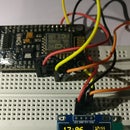Introduction: Retro Gaming With RetroPi
After a few people asked me how I got those retro games on my TV, I decided to write this instructable so that they know how to make their own. Will try to keep this as easy as possible.
So without elaborating on the technical things, we dive into the making of a retro console.
Supplies
1. Raspberry Pi Zero or Raspberry Pi 1 or Raspberry Pi 2 or Raspberry Pi 3 ( Any one). Purchase link : Raspberry Pi
2. 16 GB SD Card
3. Card Reader
4. USB OTG Cable (Needed if you are using Raspberry Pi Zero)
5. USB HUB (Needed if you are using Raspberry Pi with less than 4 USB ports)
6. HDMI Cable
7. HDMI Mini to Standard HDMI Adapter (Needed if you are using Raspberry Pi Zero)
8. USB Gamepad
9. USB Pen Drive
10. 5V DC, 2 A DC Adapter for Raspberry Pi. Purchase Link: Raspberry Pi Adapter
Step 1: Download RetroPi
Go to https://retropie.org.uk/download/ and download the pre made image for your Raspberry Pi.
In my case, I had a Raspberry Pi 3, so I downloaded the Raspberry Pi 2/3 Image.
Once the download is complete, you will get a file with extension .img.gz
Extract this file and you will get a file with extension .img
Step 2: Download Win32Disk Imager (for Windows)
If you are using the Windows Operating system, you need to download Win32DiskImager
https://sourceforge.net/projects/win32diskimager/
Run the installer and install the program.
For linux based operating systems there is no need to download any tool. For Mac, you will need Etcher or Apple Pi Baker.
Step 3: Install on SD Card
- Insert the SD card into your SD card reader. You can use the SD card slot if you have one, or an SD adapter in a USB port. Note the drive letter assigned to the SD card. You can see the drive letter in the left hand column of Windows Explorer
- Run the Win32DiskImager utility from your desktop or menu.
- Select the image file you extracted earlier.
- In the device box, select the drive letter of the SD card. Be careful to select the correct drive: if you choose the wrong drive you could destroy the data on your computer's hard disk! If you are using an SD card slot in your computer, and can't see the drive in the Win32DiskImager window, try using an external SD adapter.
- Click 'Write' and wait for the write to complete.
- Exit the imager and eject the SD card.
(Source: https://www.raspberrypi.org/documentation/installa...)
Step 4: Plug and Start
Once the card writing process is complete, remove the card and insert it into the Raspberry Pi.
Attach the HDMI cable to a Monitor, TV or any other display with HDMI input. Attach a Keyboard, Mouse and Gamepad to the USB ports of the Raspberry Pi. In case your RPi does not have multiple USB Ports, use a USB Hub.
Once all the peripheral devices are attached to the Raspberry Pi, attach the power adaptor and turn on the raspberry Pi.
First start takes a bit longer than usual and once started, you will be greeted with a RetroPi Screen and then Welcome screen. On detecting the gamepad it will say '1 Gamepad detected'
Step 5: Configuring Gamepad
Press any key on the gamepad to configure it.
Then on the configuration screen, press the respective buttons on your gamepad.
In case you don't have a button, then long press any button on the gamepad to skip.
Last key to configure is Hotkey, press the select key here.
Last press the button that you configured as 'A' to select OK on the screen.
Configuration is now complete and you will be directed to the homescreen.
Next step is to get the ROMs
Step 6: Get the ROMs
At first you won't see any consoles on the homescreen. To get those you need ROMs
ROMs are the digital version of the gaming cartridges.
Due to the nature/complexity of Copyright/Intellectual Property Rights Law, which differs significantly from Country to Country, ROMs cannot be provided with RetroPie and must be provided by the user. You should only have ROMs of games that you own.
The steps to use ROMs from a USB Pen Drive are as follows
- (ensure that your USB is formatted to FAT32 or NTFS). Out of the box USB Drives are usually FAT32, so that is all you need.
- first create a folder called retropie on your USB stick
- plug it into the pi and wait for it to finish blinking. If you don't have a LED on the stick, just wait a minute or so.
- pull the USB out and plug it into a computer
- add the roms to their respective folders (in the retropie/roms folder)
- plug it back into the Raspberry Pi
- refresh emulationstation by choosing restart emulationstation from the start menu









